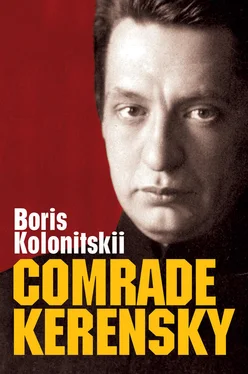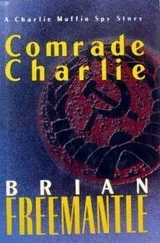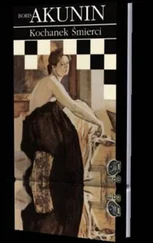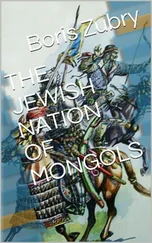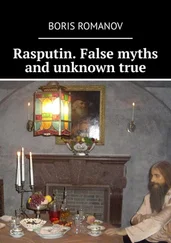During 1917, other Bolsheviks recalled their contacts with Kerensky. For example, at the end of August, Ivan Skvortsov-Stepanov published an article in which he touched on the career of Kerensky, who by then was already the head of the Provisional Government. The Bolshevik recalled a meeting with him in November 1916, by which time Stepanov believed the Trudovik leader had moved to the left. Nevertheless, he claims, Kerensky believed the hand of the Okhrana and imperial court, which he considered Germanophile, was behind workers’ unrest. 120We might take this as an attempt by a prominent Bolshevik to discredit the head of the Provisional Government by suggesting Kerensky had failed to understand the real mood of the workers, and hence was questioning the democratic credentials of the leader of the February Revolution. The article can, however, be read in a different way, with even Kerensky’s political opponents, the Bolsheviks, acknowledging his involvement in the activities of the illegals. This could only be to the benefit of his standing.
Other actions during the war redounded to Kerensky’s credit. Well informed about the mood among the illegals, he urged the liberals to give no quarter in the fight against the regime and insisted that the country was on the brink of revolution. Most of them thought he was being overly optimistic, 121but after the downfall of the tsar the Trudovik leader’s surmises were sometimes treated as infallible predictions.
During the war years Kerensky’s popularity grew steadily, aided by his speeches in the Duma. Banning them from publication only drew attention to them, and they were distributed in handwritten copies or as typewritten texts. Illegal organizations issued leaflets quoting them. After February 1917 the speeches were printed, and boosted his reputation as an opponent of the old regime, endowed moreover with the gift of prophecy.
In 1915 a former police officer, Sergey Myasoyedov, was executed. He had been falsely accused by the General Headquarters of the Supreme Commander-in-Chief of spying for Germany. It was intended that the spymania campaign, instigated by the High Command, would divert public opinion from the bungling of the military leadership. 122The Myasoyedov Affair – and people from all parts of the political spectrum were convinced of his guilt – unleashed a deluge of conspiracy theories which proved a helpful propaganda asset. Right-wingers emphasized that Myasoyedov was married to a Jewish woman and had business connections with Jewish entrepreneurs, while left-wingers pointed to the officer’s past in the police. Kerensky successfully exploited the Myasoyedov Affair to denounce ‘treason at the highest levels’. As a deputy, he wrote to the chairman of the Duma, Mikhail Rodzyanko, demanding the immediate reconvening of the Duma. Without providing any evidence, Kerensky wrote that ‘treason has built its nest’ in the Interior Ministry, where, he alleged, ‘a robust organization of full-blown traitors were calmly and confidently at work.’ These forces, he declared, were attempting to ‘stymie a successful conclusion of the conflict abroad in the interests of the enemy.’ Kerensky was not making the accusation against a particular group of top officials in the ministry but denouncing this extremely powerful ministry as a whole. ‘The leading circles of the Interior Ministry are in very close touch with a highly influential political tendency in Russia which considers it a matter of the utmost urgency to restore swiftly a close unity with the government in Berlin.’ To save the country was the duty of those elected by the people. ‘The State Duma must do everything to defend the nation from a shameful stab in the back.’ 123Kerensky’s letter gained widespread distribution, with some people writing it out in full in their diaries. According to the police, the letter was the subject of lively debate in politically engaged student circles, leaflets with the text were distributed at Petrograd University, and left-wing student groups – social democrats and internationalist Socialist Revolutionaries – tried to use it as anti-war propaganda. 124Even the Bolsheviks published it. 125It was distributed in Moscow, Kharkov, Kiev, Kronshtadt and at the front, and it was also translated into Estonian. 126
The climate of increasing spymania and xenophobia during the war caused competing conspiracy theories to spring up. Almost all the political parties made use of Germanophobia for their own purposes, although right-wing theories were tinged with anti-Semitism and Anglophobia. The opposition talked ever more insistently about a ‘German party’ at court who were angling for a separate peace, and rumours spread about the ‘empress’s plot’. 127After the revolution, the most far-out conspiracy theories had conferred on them the status of proven fact, and those who had come up with them and spread them assumed the reputation of courageous patriots who had exposed the treacheries of the old regime. Hatred of the police force, which was abolished after the February Revolution, contributed, in the light of Kerensky’s ‘exposure’ of the would-be conspiracy at the Interior Ministry, to further increasing the popularity of the revolutionary minister.
Creating his own version of a ‘stab in the back of the Russian army’, Kerensky discredited the conspiracy theories of his adversaries. During the war, right-wing politicians and high-ranking military officers spread rumours that, at the front line, practically the entire Jewish population was spying for the enemy and, in the Jewish shtetl of Kuzhi, Jews allegedly even opened fire on Russian troops. Kerensky travelled to Kuzhi and conducted an investigation, on the basis of which in the Duma he called the accusation a vile slander. 128One of his 1917 biographers also writes about the Kuzhi investigation. 129A reputation as a defender of national minorities was a considerable asset after February 1917.
During the revolution, journalists supportive of Kerensky recalled another earlier episode. In 1916 many residents of Kazakhstan and Central Asia were conscripted to work in the rear, following which there was an uprising accompanied by bloody ethnic conflicts. It was brutally suppressed by Russian troops. Kerensky, having lived in Tashkent in his youth, and feeling himself a ‘Turkestani’, took these events very much to heart and, together with Duma deputies representing the empire’s Muslim population, travelled to Turkestan. 130On his return to the capital, he talked about his trip at a closed session of Duma deputies. Giving his interpretation of this complex conflict, he ascribed all the region’s ills to the foolish actions of the tsarist administration. There was, in fact, no denying the incompetence of the government, and after February 1917 Kerensky’s version of events was just what people wanted to hear. The old regime got the blame for everything that had gone wrong. His expedition to Turkestan enhanced Kerensky’s standing with the Muslim intelligentsia, and this was manifested in 1917 when the Central Bureau of Russian Muslims and the Muslim Committee in Moscow gave him a rousing welcome. 131
Leonidov, in his biographical sketch, even insists that it was thanks to Kerensky’s decisive actions that the situation in the region had not deteriorated further in 1916. ‘When these regrettable events were playing out, Kerensky had yet to recover from a serious operation. Straight out of bed, still unwell, in defiance of all the prohibitions of his doctors, he set off to try to persuade General Kuropatkin that he should not turn the formerly loyal peoples of Turkestan into rebels and not allow Russia, which was engaged in fighting a foreign enemy, to trample this peaceful outlying region underfoot.’ 132
The mention of illness needs elaboration. Doctors discovered Kerensky was suffering from renal tuberculosis, and he had a kidney removed on 16 March 1916 in a clinic in the Finnish resort of Bad Grankulla. For several months his ability to work was severely impaired, and even in early 1917 many people noticed he was looking very unwell. He received numerous letters and telegrams wishing him a speedy recovery. 133Journalists and writers did their best to give him support. These included the economist Ber Brutskus, the publisher and political activist Yakov Sakker, the poet Sergey Yesenin, the writer Alexey Chapygin and the essayist Dmitry Filosofov. Among those urging him to get well soon was his biographer Lidiya Armand. Collective letters from groups of students give a sense of the reputation Kerensky enjoyed among radically inclined young people. An open meeting of students at Moscow University sent greetings to their ‘greatly esteemed comrade’ and expressed the hope that they would soon be able to hear the ‘ardent words of a true representative of Russian democracy’. Participants in an open meeting of students of the Psychoneurological Institute sent congratulations on the occasion of his recovery to the ‘courageous tribune of the people’ and also hoped they would soon again hear the ‘strong, ardent words of the deputy who defends the cherished aspirations of Russian democracy.’ Kerensky was sent good wishes also by the Social Democratic bloc in the Duma, the Jewish Democratic group, and the Trudovik fraction. 134Many of those who sent good wishes after his operation went on to support Kerensky politically in 1917 after he had become a minister. It was testimony not only to Kerensky’s authority but also to the emotional ties between the Leader and his supporters. This sympathy for Kerensky when he was ill, as we shall see, also influenced the formation of images of the Leader during the revolution.
Читать дальше
